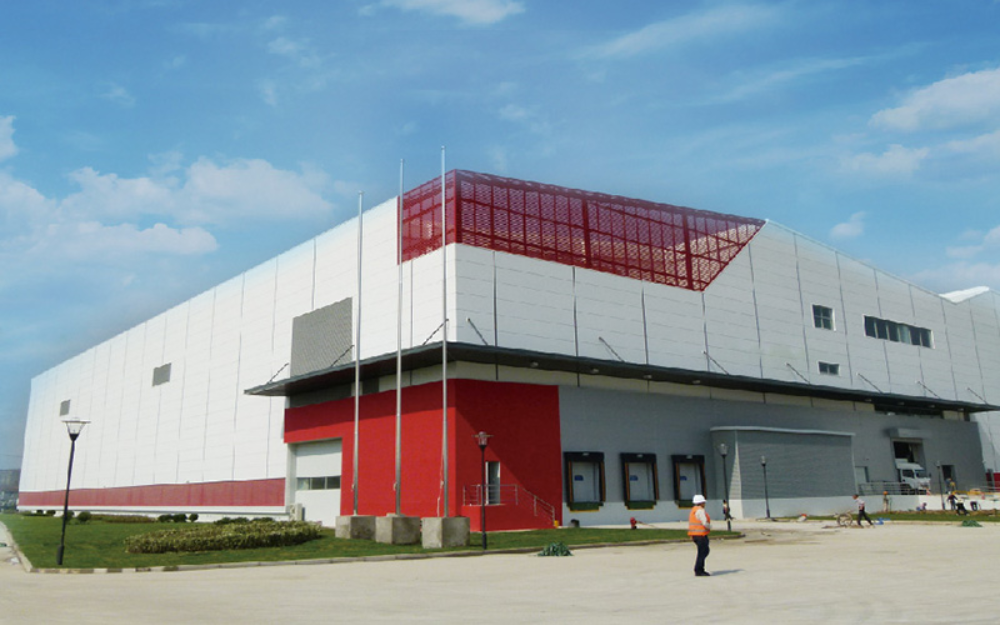How to choose PU and PIR sandwich panels for cold storage

In cold storage applications, two types of core materials are commonly used for cold storage panels: PU cold storage panels and PIR cold storage panels. These materials are widely used in cold chain facilities, serving as roofing and wall materials for cold storage facilities to ensure precise temperature control within the cold storage environment.
PU sandwich panels and PIR sandwich panels are used in cold storage because their inherent characteristics determine their suitability. Before helping you make a choice, let’s first understand the relevant insulation science.
Definition of PU sandwich panels & PIR sandwich panels
According to thermal insulation science theory, PIR is actually a derivative of PU. Both PU sandwich panels and PIR sandwich panels are thermosetting plastic foams, with a rigid foam insulation core sandwiched between two layers of metal panels (usually steel or aluminum).
- Polyurethane (PU): A traditional insulation material made from the reaction of polyols and isocyanates. For decades, PU sandwich panels have been the industry standard, highly regarded for their excellent insulation properties and strong adhesion to finishes.
- Polyisocyanurate (PIR): Commonly referred to as “modified” or “next-generation” polyurethane, PIR uses a higher proportion of isocyanate and undergoes further trimerization. This slight chemical difference significantly enhances the performance of PIR sandwich panels, especially in terms of fire resistance.
Differences between PU cold storage panels and PIR cold storage panels
Even though they look similar, differences in chemical structure determine their performance in cold storage environments. Let’s compare PU cold storage panels and PIR cold storage panels based on the most critical factors.
Thermal efficiency of cold storage panels
The primary function of cold storage panels is to resist heat transfer. This is measured by the material’s K value (thermal conductivity) or its reciprocal R value (thermal resistance). A lower K value or higher R value means better insulation.
- PU cold storage panels: Traditionally used in large-scale cold storage applications, these panels offer excellent thermal insulation performance. Typical K-values range from 0.022 to 0.028 W/mK.
- PIR cold storage panels: With the advent of PIR materials, there is an increasing trend toward replacing PU cold storage panels. PIR panels offer slightly superior thermal performance, with typical K-values ranging from 0.021 to 0.023 W/mK.
Although the difference seems small in theory, for the vast surface area of large warehouses, this slight advantage of PIR sandwich panels can translate into significant energy savings and reduce the load on cooling units throughout the building’s entire life cycle.
Fire performance of cold storage panels
Fire resistance is the most significant difference between these two types of cold storage panels, and it is also the main reason why PIR cold storage panels are the preferred choice.
- PU cold storage panels: Since PU is a thermoplastic material, PU cold storage panels will melt and burn when exposed to fire, producing dense toxic smoke. Although flame retardant additives can improve their reaction, their inherent components are not very resilient, which greatly reduces their fire resistance.
- PIR cold storage panels: Since PIR is a thermosetting material, its chemical structure forms a char layer when exposed to flames. This char layer is highly effective—it acts as a barrier, isolating the underlying foam from heat and significantly slowing the spread of fire. This provides more time for evacuation and gives firefighters more time to respond.
In cold storage facilities, PIR sandwich panels undoubtedly offer greater advantages in terms of fire safety. For facilities that store high-value goods and where worker safety is of paramount importance, PIR cold storage panels are becoming increasingly popular.
Cost of cold storage panels
Cost is an issue that every cold storage investor needs to consider. Of course, cost is not just about individual materials, but also about overall operating costs and the durability of the facilities.
- PU cold storage panels: Traditionally, PU cold storage panels have lower single-panel costs, which is one of the key reasons for their popularity.
- PIR cold storage panels: Due to the more complex manufacturing process, the initial cost of PIR cold storage panels is usually slightly higher.
Even though PU cold storage panels are more cost-effective in terms of initial costs, this is a classic case of “you get what you pay for.” The slightly higher investment in PIR cold storage panels is easily justified by their superior fire safety and slightly higher thermal efficiency, which can reduce operating energy costs over the decades-long service life of the building.
It should be noted that due to a superior supply chain, SDpanel’s PIR cold storage panels are priced the same as PU cold storage panels, which may offer a greater advantage in this regard.
Conclusion
Based on the above advantages, it can be confidently stated that PIR sandwich panels are more promising than PU sandwich panels in cold storage facilities, and therefore PIR sandwich panels will naturally be chosen.
